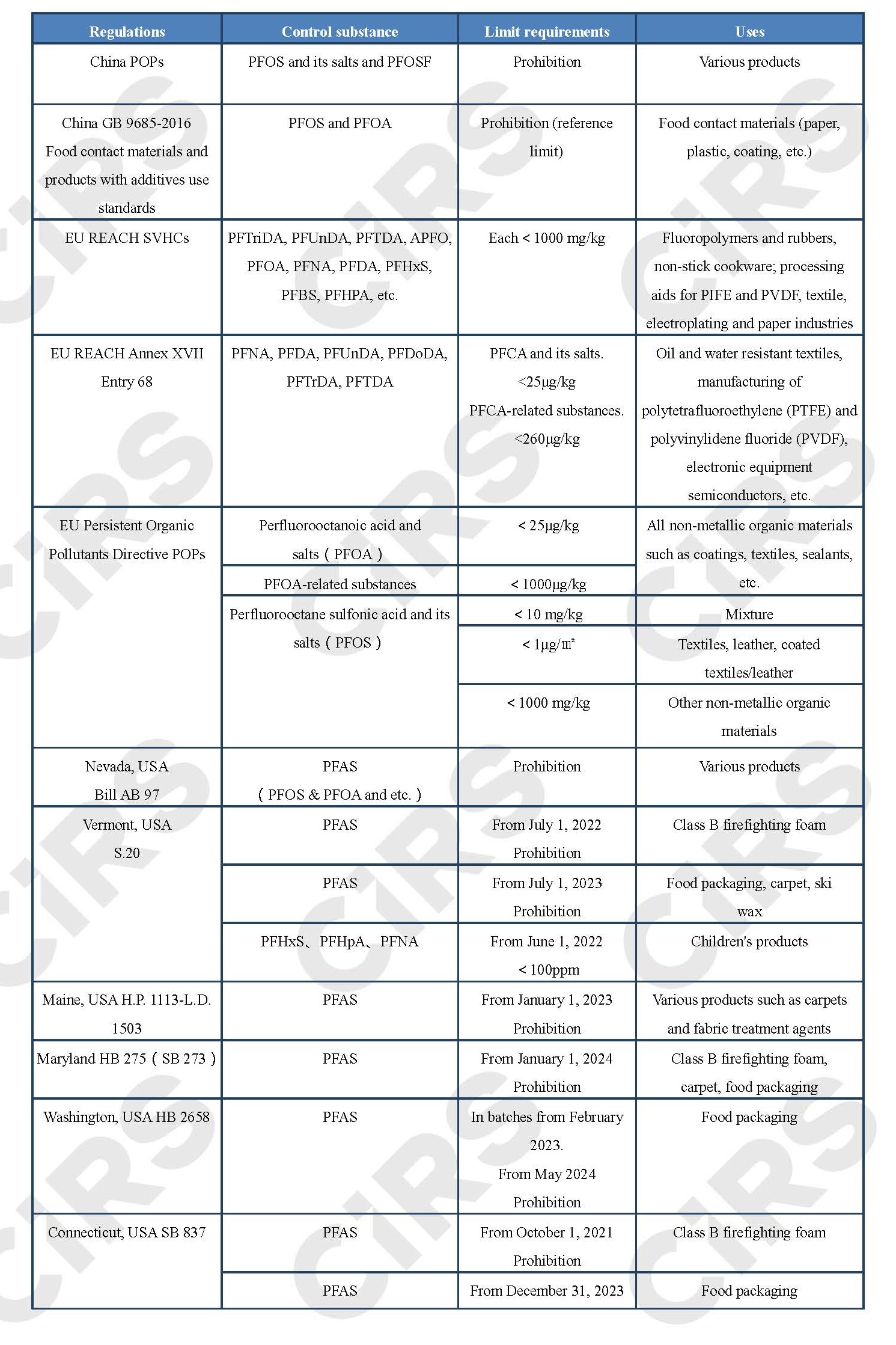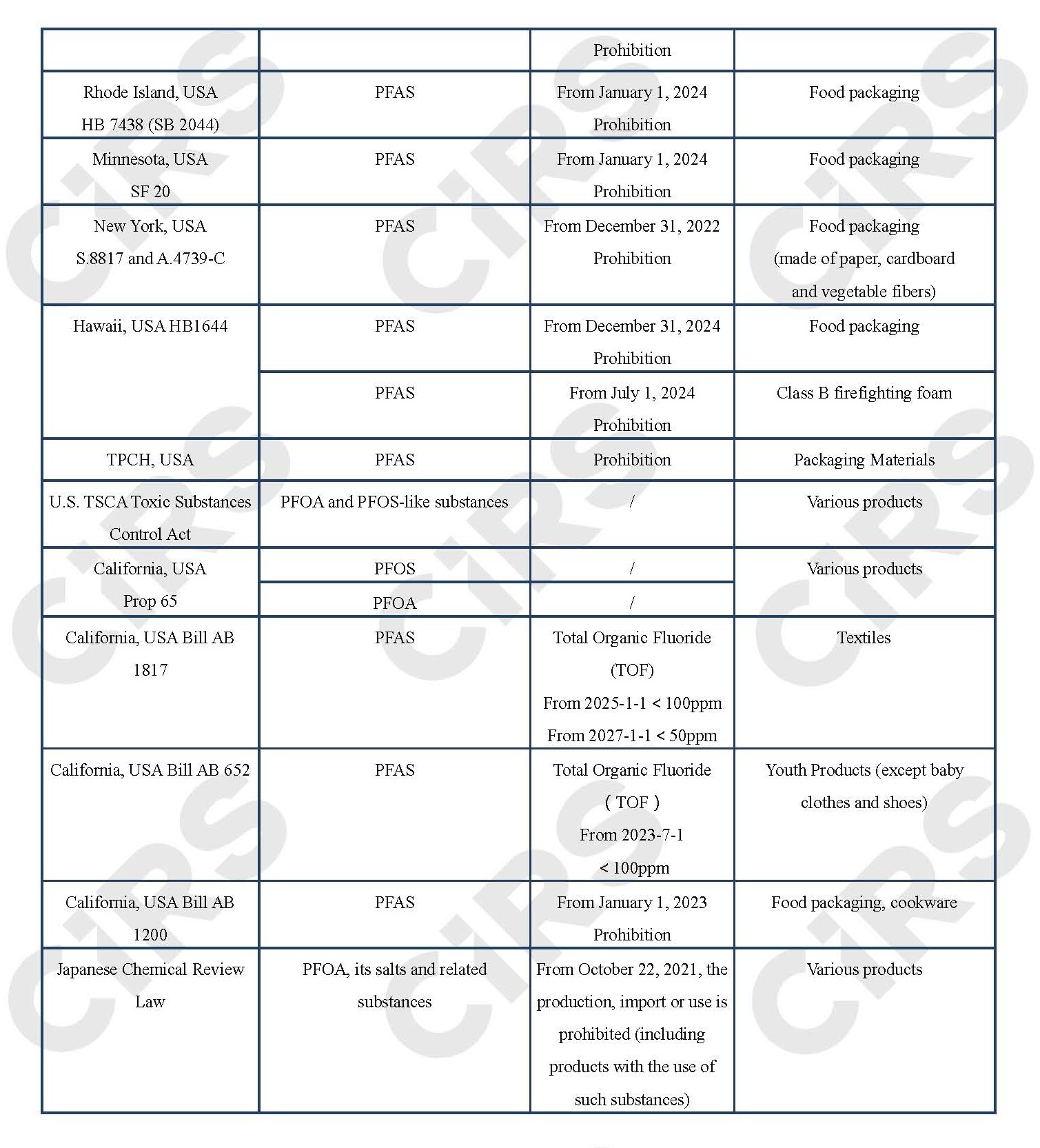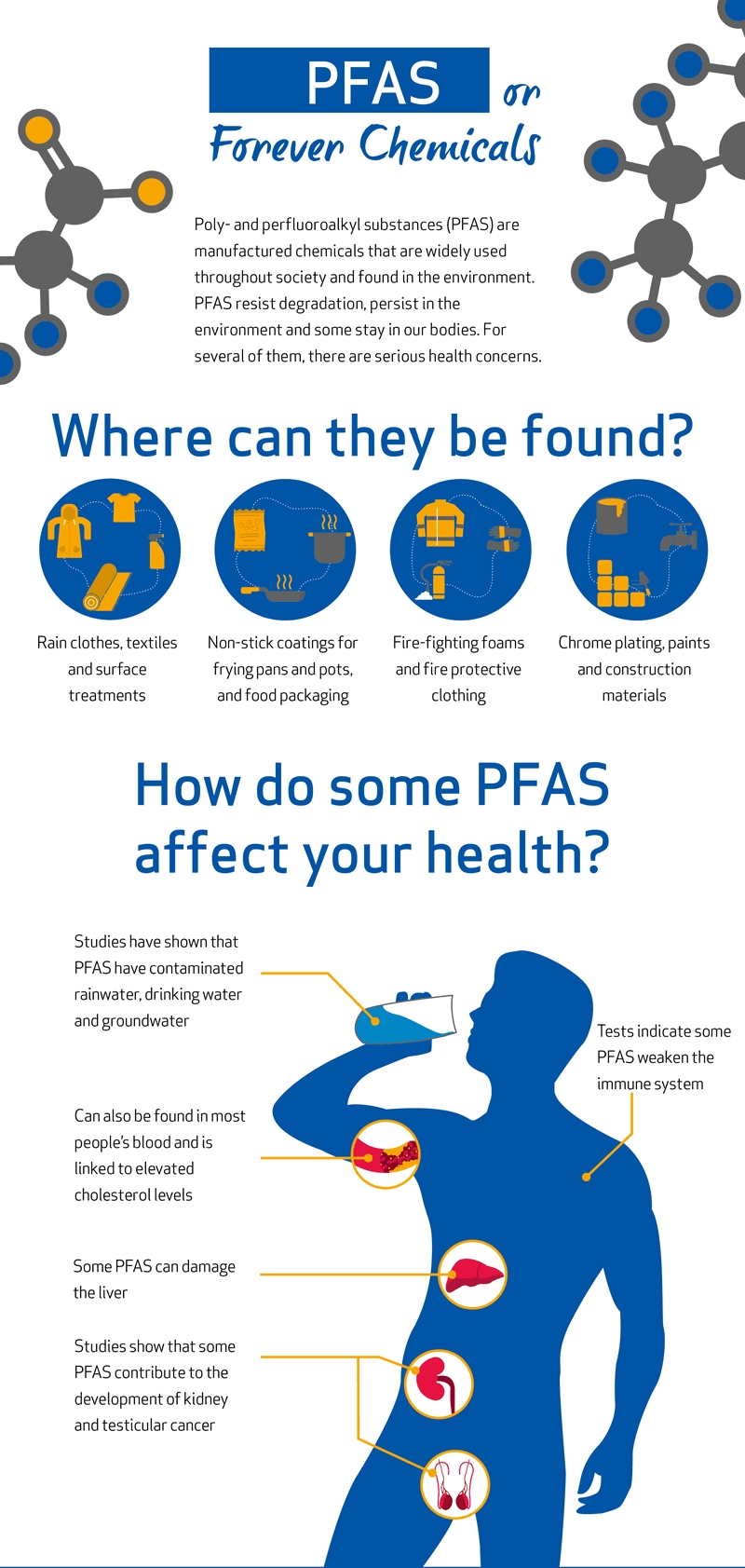Recently, several countries and regions have issued or drafted environmental regulations in succession, all of which aimed at restricting the use of one same hazardous substance - PFAS (Per- and polyfluoroalkyl substances, also known as PFCs). The frequent legislative and regulatory trends around the world have brought PFASs into the limelight once again.
- On September 27, 2022, the Ministry of Ecology and Environment (MOE) released the "List of New Pollutants for Priority Control (2022 Edition) (Draft for Comments)" for public comments. The list contains 14 key new pollutants for priority control, including 10 types of persistent organic pollutants (POPs), such as PFOS and PFOA.
- On August 29, 2022, the State of California passed Bill AB 2247, which requires reporting when Per- and Polyfluoroalkyl Substances (PFAS) are intentionally added to consumer products, effective on or before July 1, 2026.
- On August 20, 2022, California passed Bill AB 1817 and incorporated it into the California Health and Safety Act to ban the use of regulated PFAS in new textiles. From January 1, 2025, California will ban the manufacture, distribution and sale of any new textile articles containing regulated PFAS (In terms of total organic fluorine: <100ppm from 2025-1-1; <50ppm from 2027-1-1).
- On June 30, 2022, UK Health and Safety Executive (HSE) announced that it would work with the UK Environment Agency, stakeholders (such as NGOs and industry associations) to establish UK-REACH work plan priorities for 2022- 2023, which include the control of Per- and Polyfluoroalkyl Substances (PFAS).
- On June 3, 2022, the governor of Colorado signed HB 22-1345 into law. The law aims at protecting humans and the environment from Per- and Polyfluoroalkyl Substances (PFAS) chemicals, with many restrictions required to take effect as early as 2024.
In addition to the cases mentioned above, several countries (e.g. Canada, Japan, Netherlands, Germany, Denmark, Sweden and Norway) are developing new restriction proposals that will cover all types of PFAS uses and are scheduled to be submitted for consideration in early 2023 or sooner. Therefore, there will be more and more regulations and bans on PFAS in the future, and manufacturers and related practitioners should recognize the trend as early as possible and avoid being affected.
So, what exactly is PFAS?
【Basic Definition】
Perfluorinated and polyfluoroalkyl substances (perfluorinated compounds, PFCs) are straight or branched chainhydrocarbons with all hydrogen atoms replaced by fluorine, and are a large group of synthetic chemicals consisting oithousands of individual substances. Among them, perfluorooctanoic acid (PFOA) and perfluorooctane sulfonate (PFOS) are the two representative substances of carboxylic acid and sulfonic acid among PFCs.
【Chemical Hazards】
PFAS have extremely high thermal and chemical stability and can withstand high temperature heating, light, chemical action, microbial action and metabolic action of hicher vertebrates, and are one of the most dificult organicpollutants to degrade found in the world, with high bioaccumulation capacity. When they are ingested by organisms, they are not enriched in adipose tissues, but are bonded with proteins in the blood, and accumulate in liver, kidneymuscle and other tissues, and exhibit obvious bioaccumulation.
Both PFOA and PFOS can cause weight loss and body size reduction in newborns. PFOA can cause endocrine dysfunction and carcinogenicity. and is also associated with thyroid disease. Regarding perfluorinated compounds, the longer its carbon chain is, the more difficult it is to degrade and the more harmful it is. The total emission of PFAS in the process of production, market release and use can also aggravate the pollution in drinking water and soil.
【Common Uses】
These substances are used in various products such as anti-fouling agents, lubricants, non-stick coatings for cookware, textiles, cosmetics, paper, food packaging, optoelectronics, semiconductors and firefighting foams because of their oil and water resistance and low chemical reactivity, and are also found in plastic toys, metal surface coatings, skis, dental floss, cosmetics, drinking water and other products.
PFAS substances have been acceded to the Stockholm Convention for various times and are strictly regulated globally due to their simultaneously persistent, bioaccumulative and toxic hazard characteristics. Except for specific exemptions or specific uses, they are gradually being phased out in the market. Below we will briefly analyze its control in mainstream countries or regions around the world.



Photograph source: ECHA
About C&K Testing
Hangzhou C&K Testing Technic Co., Ltd. (CIRS C&K Testing), a wholly owned subsidiary of CIRS Group, is an international authoritative third-party testing institution. CIRS C&K Testing is awarded as a state high-tech enterprise. With a mission to enable product compliance for clients and enhance quality for healthy life, CIRS C&K Testing will help clients gain a competitive advantage in the global marketplace by ensuring product safety and quality, and enhancing brand competitiveness.
In the face of many control regulations for PFAS substances, CIRS C&K testing long-term tracking and interpretation of the latest international developments. CIRS C&K Testing, with a number of top instruments and equipment is able to provide PFAS perfluorinated substances screening, comprehensive testing and other solutions. If you need any assistance or have any questions, please get in touch with us via test@cirs-group.com.
